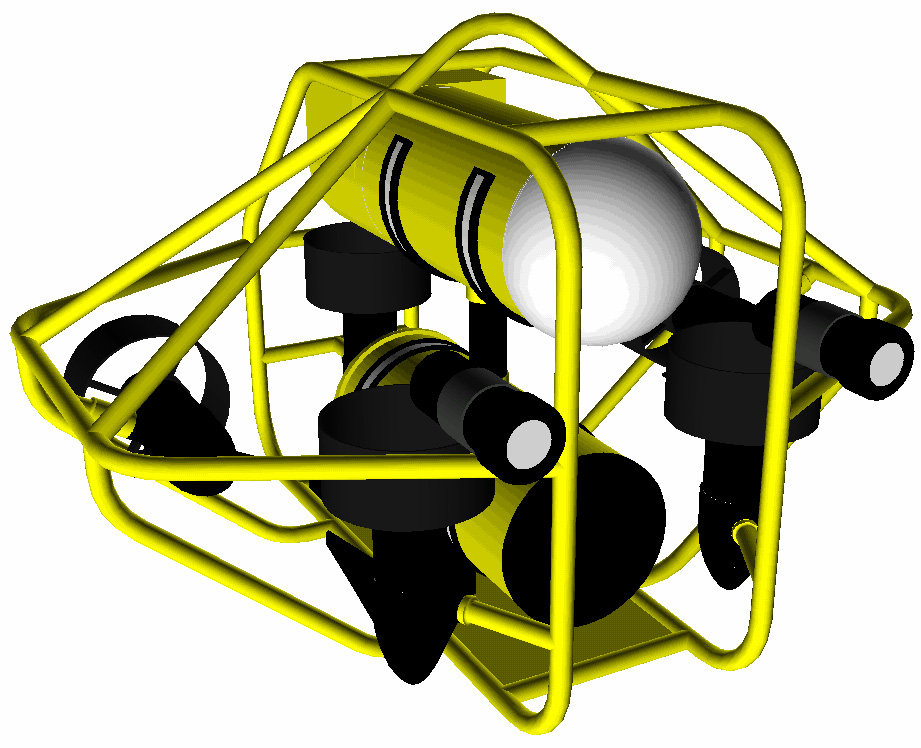
Images of frame, enclosures and motors.
The theoretical maximum current, 30A, with 5 thrusters the propulsion system could draw 150A or, power at 24V of 3600W. However, driving all five thrusters at full power is impossible since the maximum vertical travel on the submersible is about 30m and the sub would reach this limit in a minute or less.
In practice once the thurster is in motion, the peak current is 20A. A maximum dive would consume 2 * 24V * 20A = 960W. And a dive with full forward thrust would require 4 * 24V * 20A = 1920W. This is probably the maximum.
A more reasonable estimate may be that forward thrusting pairs (surge) would average full thrust 25% of the time, and the roll pair and pitch pair (or heave) would average full thrust 5% of the time. Thus (0.25 * 2 + 0.05 * 2 + 0.05 * 2) * 24V * 15A = 252W
Refer to the power budget for greater detail.
Total maximum power for the submersible is estimated at 1920W for maximum thrust plus 120W for other components including lights for 2040W total.
The lower enclosure is 264mm diameter by 605mm length. Typical dimensions for sealed lead acid batteries are 73x175x180mm. As many as 6 such batteries (i.e. Hawker Genesis) would fit in the enclosure, each providing 16Ahrs (at a 10hr discharge rate). Derating the batteries by 30% (to be determined experimentally but approximate fpr a 2hr discharge) for faster discharge and pairing them to achieve 24 volts, gives 3*(0.70*16Ahrs)*24V = 806Whrs
The nominal operating per charge is then 806Whrs/312W=2.6hrs (and at maximum thrust, less than 30 minutes.)